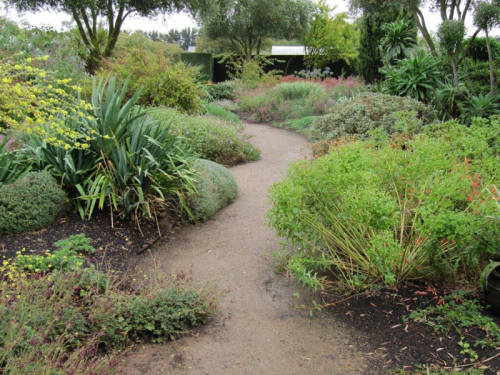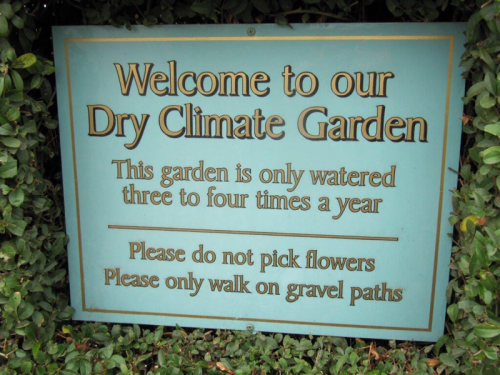
AS we appear to be having increasingly longer periods of dry weather, it’s worth considering drought-tolerant plants for the garden.

While some think them uninteresting and lacking in colour, nothing is further from the truth. Spring brings colour to the garden, in particular from bulbs, which originate in the hottest parts of the world, the Middle East.
Right around the Mediterranean, from Turkey and Iraq to North Africa, there are prime examples of drought-tolerant plants growing in nutrient-starved poor soils.
Australia is not the only place experiencing longer, hotter summers and milder winters. Our daughter, who lives in Holland, tells me of many days over 30C in one of the driest northern summers on record.
In the UK, the Royal Horticultural Society is sending its members 10 top tips for caring for gardens in the long, hot, dry summer they are experiencing.
In Victoria, David Glenn’s Lambley Nursery at Ascot, on the dry, windswept plains near Bendigo, is displaying drought-tolerant plants.

Glenn sources the world with an emphasis on dry-climate plants displayed in his gardens (as illustrated) and the sign says it all.
So, how do we know which are drought-tolerant plants simply by looking at them? Firstly, think very small leaves such as rosemary or thyme that require less moisture than large-leafed plants. Then think of those plants with silver foliage, cistus or rock rose and lavender are perfect examples. Succulents, which include sedums, store moisture in their fleshy leaves as do cactus.
A sweeping statement, I know, but most perennials, some of which stay evergreen after flowering and others die down in winter to have a rest, are great drought-tolerant plants.

Once again, it’s hard to go wrong with Mediterranean plants in regard to cold as we experience in Canberra. In those regions and desert country, the temperatures drop below zero.
All the above is equally applicable to our native plants and the Lambley website is lambley.com.au
THE most informative book on the subject is Olivier Filippi’s “Planting Design for Dry Gardens” (Filbert Press). Filippi and his wife Clara own a nursery in the south of France that specialises in exceptional dry-climate plants.
For more than 25 years they have made numerous trips to the world’s Mediterranean regions to study plants in the wild. The extensive list of plants are almost all available in Australia and many readers, without realising, will have these plants growing in their gardens.
I correspond with Filippi and can assure you that all his advice is applicable here. This is the book for anyone serious about having a low-maintenance garden using a minimum of water.
Jottings…
- With inevitably higher water costs in the ACT, consider reducing lawns and think drought-tolerant plants.
- Check out all drip-irrigation systems. If the drip lines have become buried, lift above the soil and check for any leaks or loose connections. The drip lines should be on top of the soil and under the mulch.
- Start mulching at the end of this month (50-75mm thick). If no rain is forecast, wet the soil thoroughly before spreading mulch. I recommend Canberra Sand and Gravel’s Canberra Organic Mulch.
Who can be trusted?
In a world of spin and confusion, there’s never been a more important time to support independent journalism in Canberra.
If you trust our work online and want to enforce the power of independent voices, I invite you to make a small contribution.
Every dollar of support is invested back into our journalism to help keep citynews.com.au strong and free.
Thank you,
Ian Meikle, editor




Leave a Reply